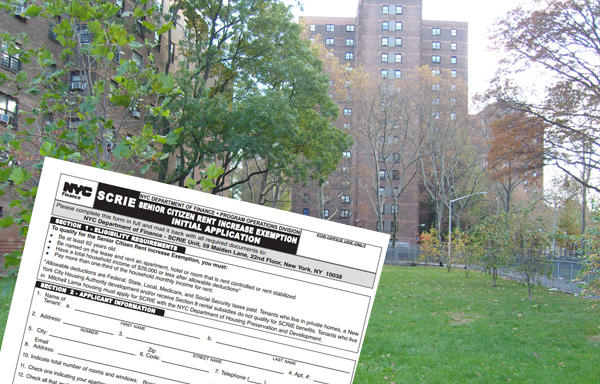
Photo by: Jarrett Murphy
Bill de Blasio’s plan for senior housing emphasizes the SCRIE program. Joe Lhota backs a plan that would create 6,000 new units of senior housing, and use some of them to house seniors who vacate apartments at NYCHA complexes like the Robert Wagner Houses in East Harlem.
We often think of affordable housing as something young, middle-class families need. But senior citizens hunger for it, too. Just as stagnated wages make young workers struggle to pay rent, fixed income puts seniors—40 percent of whom are classified as very low income—in the same kind of bind. And as New York gets grayer (the over 65 population is expected to double between 2012 and 2060) the housing needs of seniors will become even more pressing. In a recent survey by AARP, half of seniors said affordable housing was a major issue. But with federal support for senior housing eroding, the next mayor will have to decide whether to take a lead on the issue.
So far, despite the fact that people over 65 are likely to make up about half the electorate on November 5, senior housing hasn’t gotten much attention (not nearly as much as, say, charter schools, which serve about one in 25 public school students).
Republican Joe Lhota has endorsed the Housing First! plan, which calls for the creation or preservation of 150,000 units overall, earmarking 6,000 units for seniors—with the idea that some seniors now living in NYCHA apartments that are larger than they need would move into some of the new housing. Democrat Bill de Blasio’s housing plan, which promises 190,000 units over 10 years, would aim to enroll more seniors in the Senior Citizen Rent Increase Exemption program, SCRIE.
AARP endorsed the Housing First! plan, with Beth Finkel, State Director for AARP in New York State, saying in a statement: “The Housing First! plan is a great first step in the right direction.”
Both plans offer less detail and depth on the senior-housing front than on general housing strategy—although some of those general plans would help seniors along with everyone else. As far as specifics go, one could nitpick either plan. SCRIE—de Blasio’s main senior-housing resource—is helpful but flawed. And to whatever extent it moved seniors from NYCHA to some of the 6,000 new senior units it envisions, the Housing First! plan isn’t creating new senior housing, but rather moving seniors form one affordable setting to another (although the move would permit other families to use the vacated NYCHA units).
Given the trajectory of the mayoral campaign, it’s not likely that Lhota or de Blasio are going to be forced to give more details on their plans before Election Day. Housing First!, a coalition that includes everyone from Bank of America to the Supportive Housing Network, says it is meeting soon with the Council of Senior Centers and Services and Leading Age to form a more detailed plan for housing seniors. After all, regardless of whether Lhota or de Blasio wins the race, if he serves two terms, the next mayor will join the Over-60 set while in office. Below is a breakdown of the de Blasio and Housing First! plans.
The de Blasio plan
190,000 units over 10 years
The Housing First! Plan
150,000 over eight years








